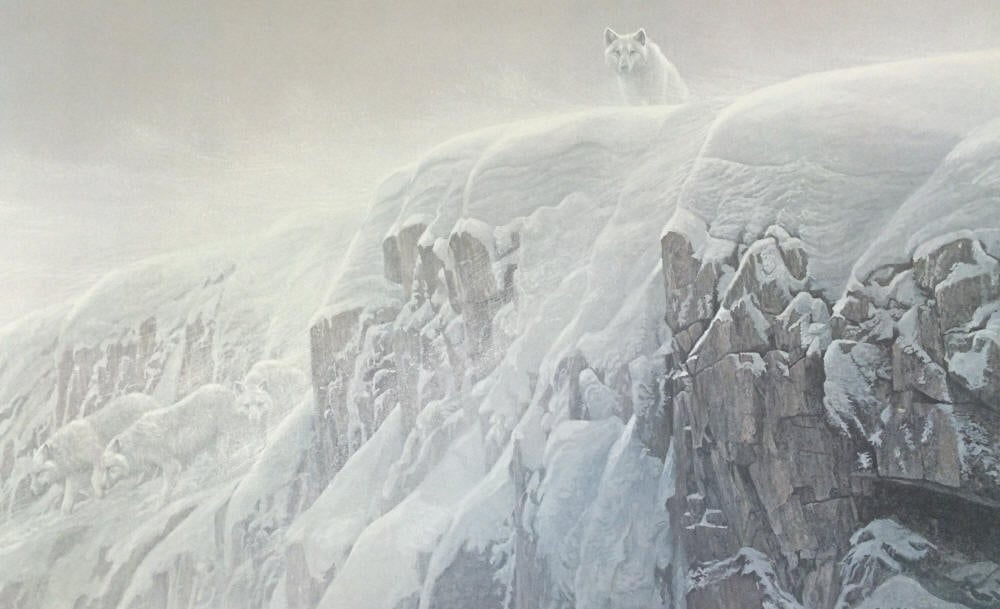Arctic Cliff – White Wolves
In this painting, the wolves have been arranged to induce the excitement of discovery. You and the wolf on the top of the cliff first discover and observe each other. A moment later, you realize that there are other wolves, making their way down to the bottom of the cliff - to your level - and that they, too, are aware of you.
The wolf is one of the most widespread predators in the world. In ancient times, in fact, it was found all over the world. As a result of its competition with man, the wolf is now extinct throughout most of its original range. The main point of conflict between the two species has been that wolves prey on man's domestic animals. One of the last great refuges for canis lupus is the arctic. Of course, the arctic doesn't have domestic animals and probably never will. One therefore hopes that this domain will always be a stronghold for the wolf.
The species canis lupus has a great range of colors, from solid black to pure white, with various grays and browns in between. Arctic wolves are generally white for obvious purposes of camouflage.
In this painting, I have shown a piece of arctic habitat, a geologic outcropping. One of the most exciting summers of my life was spent making geologic maps in the arctic. For four months, we worked our way along just such an escarpment as this one in Arctic Cliff. The limited arctic vegetation reveals the bare bones of the land, which stand out with strength and power. I have included the snow because I find pleasure in the positive and negative shapes in the interplay of rock and snow. What fascinates me about the natural world is the way the physics of wind, weather and the other elements constantly create a visual dynamic. I am also fascinated by the sculptures created by the snowdrifts shifting among the rock.
- Robert Bateman
Arctic Cliff – White Wolves
Robert Bateman
(-50%)
This Piece has been Signed by Robert Bateman

